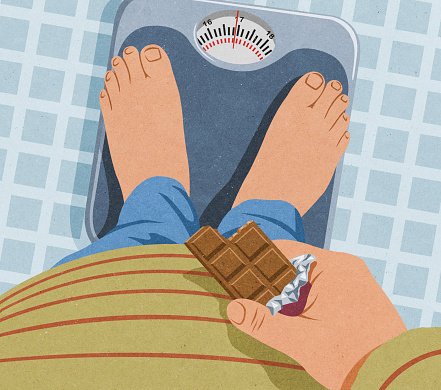Look, we love to eat. We live in a world where we are fortunate enough to feast on diverse dishes, eat authentic foods, and switch up our diet plans often. Supermarkets are shelved with options for our individuality. We can be omnivores, vegetarians, gluten-free, ketogenic, paleo… All these standards and trends in the search of a successful system to be healthy and drop weight.
Just like all things in life, when we begin a journey, it always helps to have a map to start with. What are some key points when it comes to nutrition? How do you lose weight effectively? To look and feel the healthiest, just like any success in life, there has to be an understanding of what goes into your body. Here are some essentials.

- Calories: A calorie is a unit of energy. That’s why it’s become common knowledge that burning calories (such as cardio) is a great way to drop weight. Above anything in nutrition — and no matter what your fitness goal is — it is crucial to figure out how many calories your body burns on average in a day. Let’s say Ryan wants to drop weight and uses up 2,200 calories a day. Ryan is going to have to find a way to utilize less than his average 2,200 caloric intake to shed the pounds. Ryan may want to go on a 1,800 calorie diet with some cardio. On the flip side, Joe is a skinny Minnie and wants to gain muscle. Joe is sitting pretty at burning 2,000 calories a day. Joe will probably want to add about 2,400 calories and some lifting into his routine. It’s really simple: You want to gain weight, you eat more calories and lift heavy so you process that energy into muscle rather than fat. If the goal is to lose weight, you use less energy than what your body naturally allocates to you.
- Macronutrients: Top of the importance is calories, but many fitness experts and newbies alike start of with a breakdown of macronutrients. Macros, as they are casually called, are a great and phenomenal way to fine tune what your individual body needs. Macronutrients provide the energy needed and are broken down as follows:
- Carbohydrates: Carbs have been given such a bad reputation lately thanks to diet fads such as the Atkins diet, so they’re commonly known as guilty pleasures. But the truth is, we need carbs. They are our number one source of energy. Without them, we would feel sluggish and weary through our day. That’s why they exist! Carbs are quite the diverse macros: They vary from pasta, rice, and grain to vegetables and fruits loaded with nutrients and even anti-oxidants. Don’t ever throw carbs out of your system. You need them. But feel free to take out the bad ones and keep the good ones in. French fries = bad carb. Spinach & apples = Awesome carb. Most beginners start at 50 percent carbs in their diet.
- Fats: The second macronutrient has a bad reputation for its namesake alone. “Do I look fat?” “I’m fat, I need to lose weight”. Most sentences with the word “fat” have a negative connotation (unless you’re a rapper from the ’80s). But, I’m here to clarify that fat isn’t bad! In fact, it is another essential macronutrient for our body to function effectively. They are needed for healthy skin (our biggest organ), nails, hair, and to keep our system functioning properly. In fact, maintaining good fats in your diet can actually be a catalyst for effective weight loss (*ahem* ketogenic diet). Just like carbs, it’s important to pick the good fats versus the bad. Unsaturated fats like omega-3 are extremely good for you. Transfats found in a lot of cooking oils (hence why fried foods are the devil) can cause heart disease if consumed heavily. Choose your fats wisely. A safe place to start is an intake around 25 to 30 percent.
- Protein: Ah, the third macronutrient. The hero of the three. Protein has a wonderful reputation as it aids in replenishing and building muscles. Fitness gurus and bodybuilders alike love protein. Healthy dishes posted on social media always have protein decorated on them. Overall, protein is a wonderful macro but because of it’s god-like reputation, many are unaware that too much of it can actually have an adverse affect. Overdoing protein can actually make you gain the weight you don’t want. It can bloat you. So be careful with the obscene myths that protein is all good. People usually start their diet with 20 to 25 percent of protein.
- A special shoutout to fiber: Fiber isn’t a macronutrient, but it is such a healthy component that I wanted to shine a spotlight on it. On average, Americans are not eating enough fiber. Men need about 38 grams of fiber a day, while women need about 25 grams. Hitting that mark daily will really help you get that figure you want, drop the bad leftovers in your body, and give you consistency in your body functions. High fiber foods include berries, legumes, beans, and grains.
- Collagen: The main structural protein found in the skin has become popular recently, but people in Japan has been taking collagen via hot pots and supplements for centuries. Collagen is the fountain of youth not only aesthetically — as it helps with hair, skin and nails — but it is a strong and positive force for bones, tendons and ligaments. Along with glucosamine, it can really help in joint function (knee problems anyone?).
Another useful set of guidelines: The Gentleman’s Guide To Handling Rejection
Now that we’ve broken down calories and the percentages of macros needed in them, hopefully you have a better understanding of why all three — carbs, fat and protein — are equally important in their own way. Of course, everyone’s body is different and it takes time to tweak the amounts that work best for you according to your lifestyle and goals. It takes about four to six weeks with consistency in your diet to start seeing results, so patience is key. See what works for you, be patient, and use your self-control.









